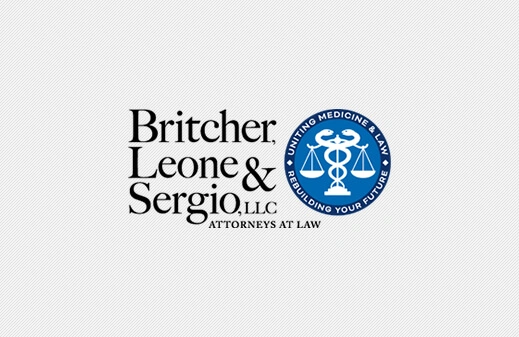
CANCER, LUNG CANCER | December 23, 2025
The U.S. has been experiencing a shortage of primary care physicians (family medicine, pediatricians, geriatricians) as medical school graduates go after specialties that pay more.
Among the various premises liability cases possible, trip and fall accidents on the sidewalk are the most common. Whether “trip and fall” or “slip and fall,” either one takes the injured party down and can cause real harm.
Trip and fall: This type of sidewalk accident occurs when a person’s foot gets caught on or in an obstacle in front of them. Their upper body shifts forward but their legs remain stationary, and they trip forward.
Slip and fall: The person’s front foot or feet slip out in front of them, causing them to fall and land on their back or side.
For purposes of this blog, we will combine slip-or-trip and fall accidents on the sidewalk, since both of these scenarios present potential premises liability cases.
Understanding Sidewalk Trip and Fall Accidents
Whenever a pedestrian loses their balance and falls on a sidewalk, these are sidewalk trip and fall or slip and fall accidents. These accidents can result in a range of injuries depending on the severity of the fall. These may be minor soft tissue injuries (scrapes and bruises, sprains and strains) tor more severe injuries like fractures, spinal injuries, or head trauma.
In many incidents, accidents may be due to dangerous conditions, the property owner’s negligence, or the fault of the municipality or agency that maintains the public sidewalks where the accident occurred, which may lead to a personal injury claim.
Trip and fall accidents are not limited to pedestrians. Bike riders (children or adults) may also suffer an injury due to uneven sidewalks or other dangerous conditions.
Common Causes of Sidewalk Hazards
Common sidewalk hazards include uneven surfaces, obstructions, poor sidewalk maintenance, and poor lighting.
Steps to Take After a Trip and Fall Accident
As with any personal injury situation (and potential claim), the injured person should report the incident right away to the property owner, government agency or municipality and get a copy of the incident report.
Be sure to seek medical attention immediately and take photos to document the accident scene; find out if there is security camera footage, as well. If there were witnesses, gather their contact information and preserve the clothing you were wearing in case it is needed later in a personal injury claim. If personal property was damaged or destroyed in the accident, retain relevant receipts for repair or replacement.
Next, contact an experienced personal injury attorney who will help you navigate the legal process and pursue just compensation for your injuries. If you decide to file a personal injury claim against a municipality, your attorney must submit a “Notice of Claim” within 90 days of the accident. There is also a statute of limitation in New Jersey for a premises liability personal injury claim, which is two years from the date of the accident.
Determining Liability in Sidewalk Injury Cases
Proving negligence on the part of the property owner or municipality (the party responsible for maintaining the sidewalk) is the key to determining liability in sidewalk injury cases. It’s about proving the sidewalk presented a dangerous condition or sidewalk maintenance was faulty, causing the fall.
To establish this liability, the injured person (or the injured party’s personal injury attorney) must prove:
Compensation Available for Sidewalk Injury Claims
In New Jersey, compensation for sidewalk injury claims can be for economic and/or non-economic damages.
Economic damages are for medical expenses, lost wages, and out-of-pocket expenses for treatments and medications.
Non-economic damages cover a disability or impairment as a direct result of the accident, emotional distress, pain and suffering, loss of quality of life, and loss of family support or companionship. In some rare cases, the personal injury attorney may prove that the responsible party acted with reckless disregard or intentional wrongdoing, which may qualify for punitive damages.
If personal property such as a laptop computer or tablet, eyeglasses, or other property was damaged during a trip and fall, you may receive compensation for repair or replacement.
How to Prove Negligence in a Trip and Fall Case
As you can see, it is crucial to the success of a trip and fall case to prove negligence on the property owner’s or government entity’s part in maintaining the sidewalk’s safety. You must demonstrate:
This all requires gathering evidence to support your personal injury claim as we outlined above (photos/videos, incident report, witness statements, medical records), as well as pulling premises maintenance and inspection records if possible, getting employee testimony regarding knowledge of the hazard, and expert testimony about the sidewalk hazard and conditions that led to the trip and fall accident.
In addition, your attorney may use “constructive knowledge” to prove negligence. This means that even if the property owner didn’t have actual knowledge of a hazard, the law may consider them to have constructive knowledge if it was present for a long enough time that they should have known about it.
Contacting an Experienced Injury Attorney
At Britcher, Leone & Sergio, LLC, our experienced personal injury attorneys have represented plaintiffs in premises liability lawsuits, including those who suffered injury in a sidewalk slip and fall accident. If you have suffered an injury and believe the property owner is at fault, contact our office to learn more and get the legal guidance you deserve.
Related Posts